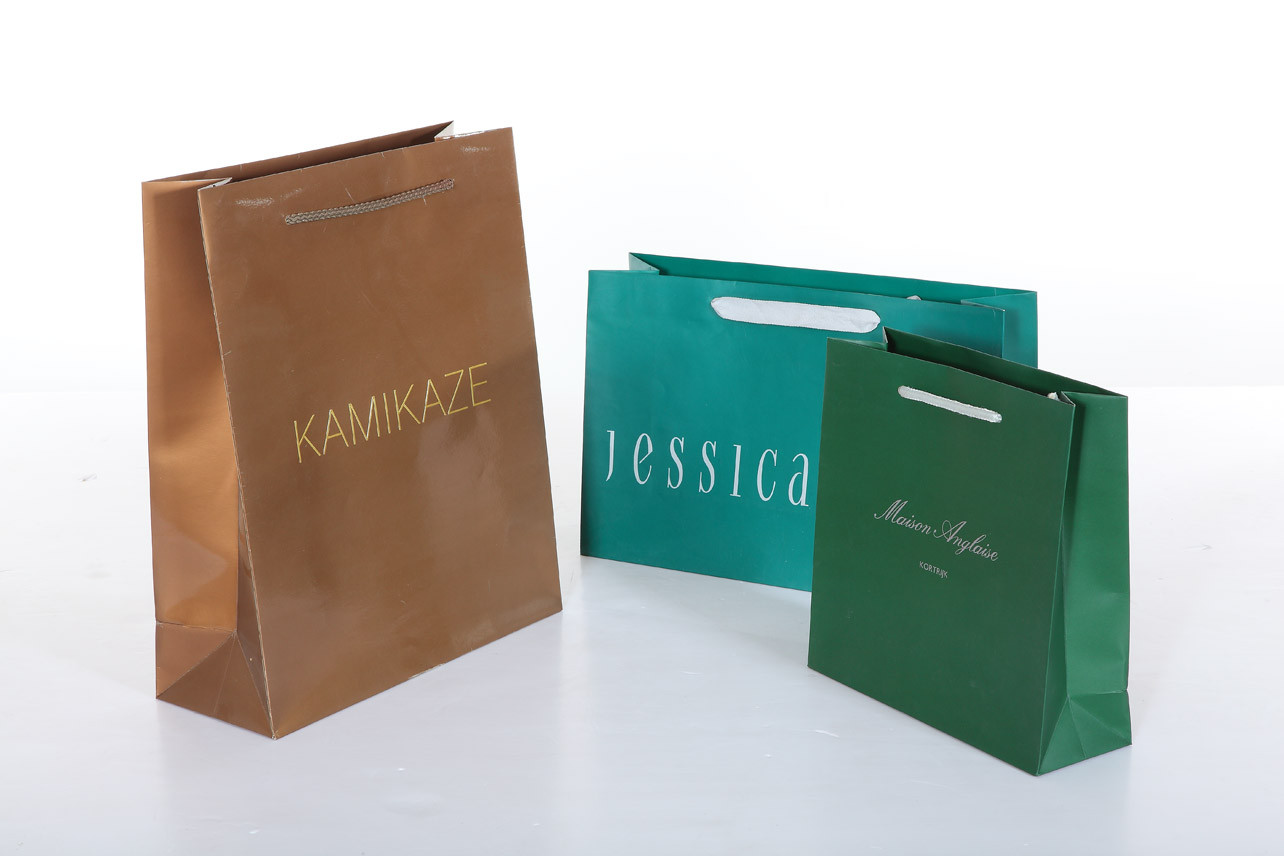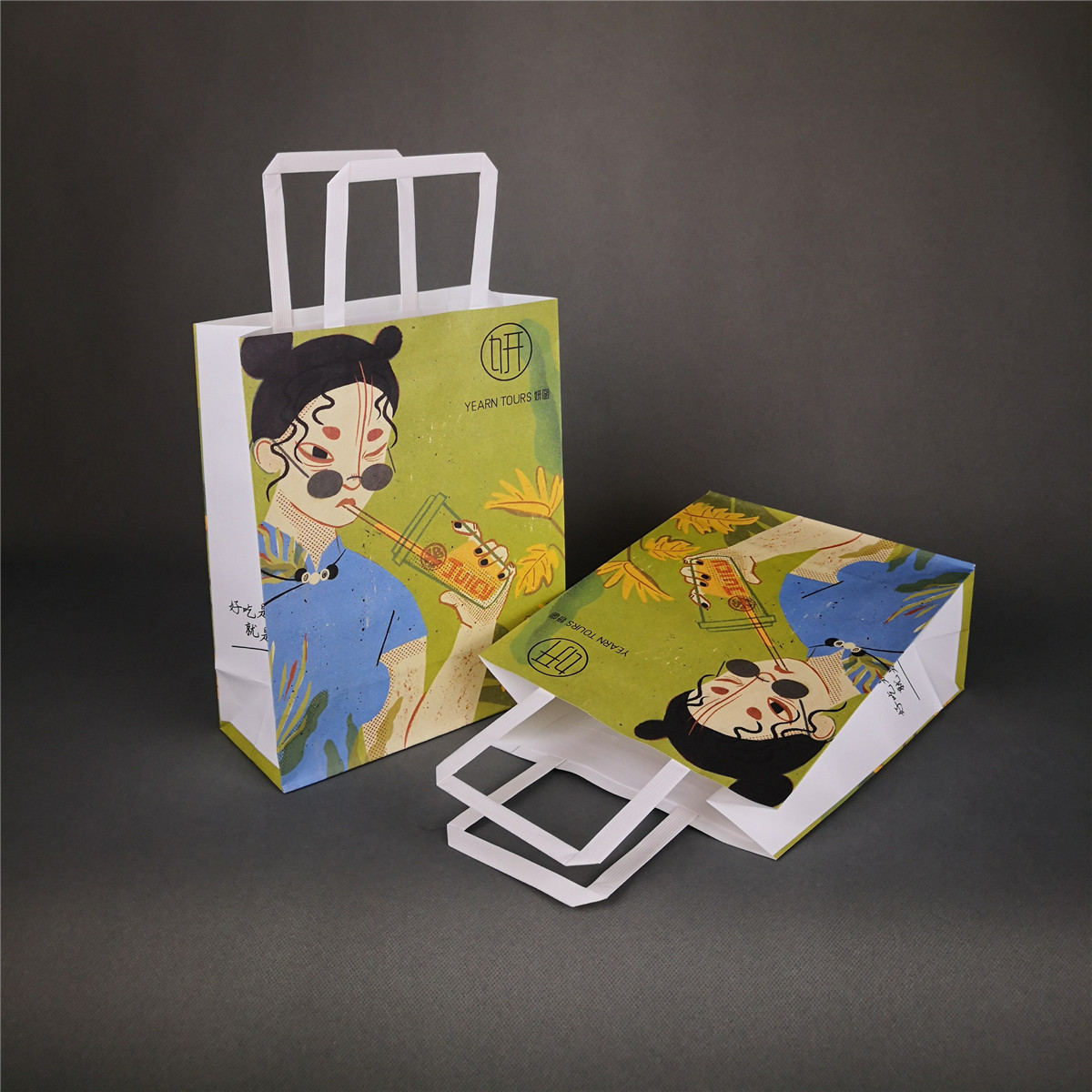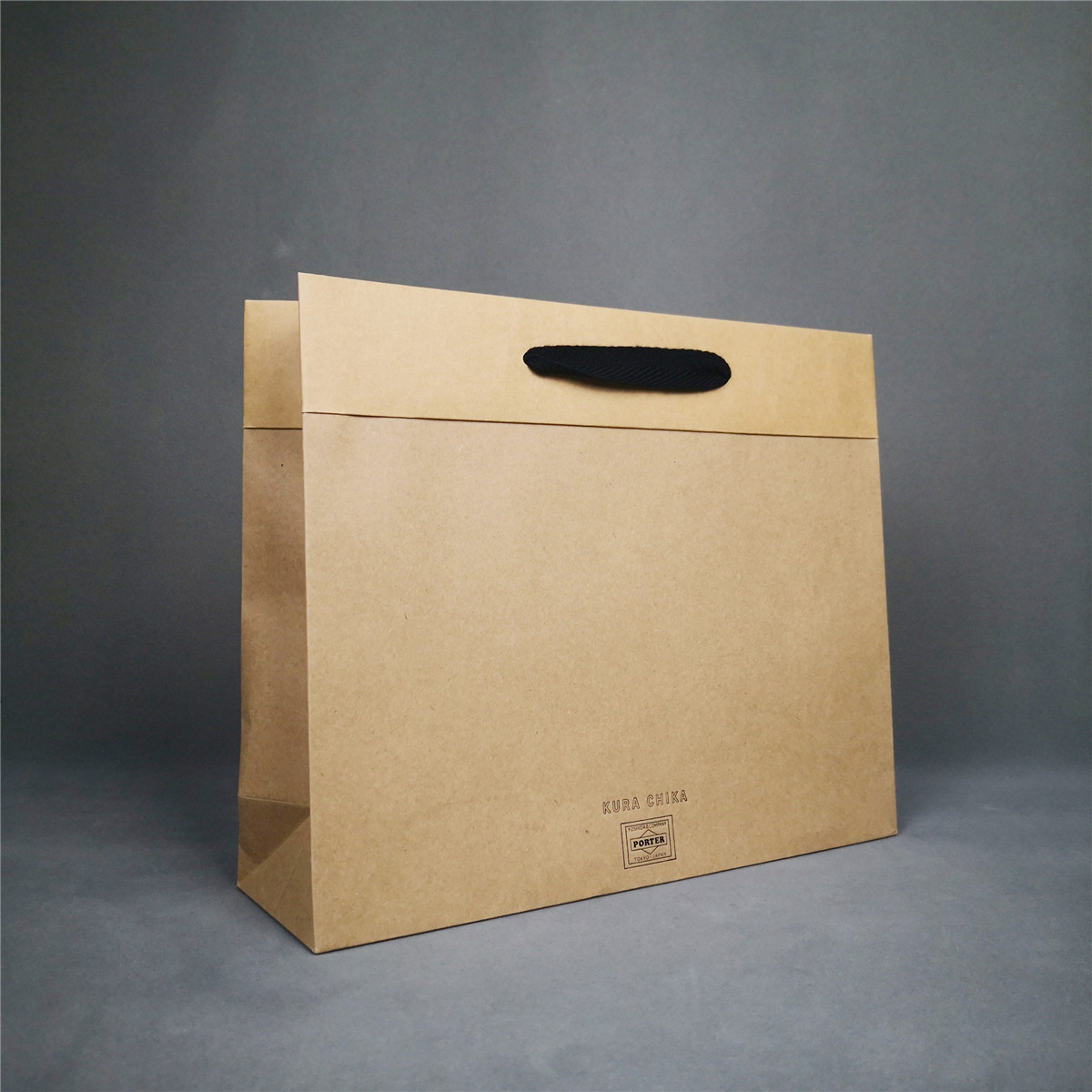Paper bags are a broad category Encompassing various types and materials, where any bag containing at least a portion of paper in its construction can be generally referred to as a paper bag. There is a wide variety of paper bag types, materials, and styles.
Based on material, they can be classified as: white cardboard paper bags, white board paper bags, copperplate paper bags, kraft paper bags, and a few made from specialty papers.
White Cardboard: Sturdy and thick, with high stiffness, burst strength, and smoothness, white cardboard offers a flat surface. Commonly used thicknesses range from 210-300gsm, with 230gsm being the most popular. Paper bags printed on white cardboard feature vibrant colors and excellent paper texture, making it a preferred choice for customization.

Copperplate Paper:
Characterized by a very smooth and clean surface, high whiteness, smoothness, and glossiness, copperplate paper gives printed graphics and images a three-dimensional effect. Available in thicknesses from 128-300gsm, it produces colors as vibrant and bright as white cardboard but with slightly less stiffness.

White Kraft Paper:
With high burst strength, toughness, and strength, white kraft paper offers stable thickness and color uniformity. In line with regulations restricting the use of plastic bags in supermarkets and the global trend, particularly in Europe and America, towards environmentally friendly paper bags to control plastic pollution, white kraft paper, made from 100% pure wood pulp, is environmentally friendly, non-toxic, and recyclable. It is highly and often used uncoated for eco-friendly clothing handbags and high-end shopping bags. Typical thicknesses range from 120-200gsm. Due to its matte finish, it is not suitable for printing content with heavy ink coverage.


Kraft Paper (Natural Brown):
Also known as natural kraft paper, it has high tensile strength and toughness, typically appearing in a brownish-yellow color. With excellent tear resistance, rupture strength, and dynamic strength, it is widely used for shopping bags and envelopes. Common thicknesses range from 120-300gsm. Kraft paper is generally suitable for printing single or double colors or designs with simple color schemes. Compared to white cardboard, white kraft paper, and copperplate paper, natural kraft paper is the most economical.
Gray-Backed White Board Paper: This paper features a white, smooth front side and a gray back, commonly available in thicknesses of 250-350gsm. It is slightly more affordable than white cardboard.
Black Cardstock:
A specialty paper that is black on both sides, characterized by fine texture, thorough blackness, stiffness, good folding endurance, smooth and flat surface, high tensile strength, and burst strength. Available in thicknesses from 120-350gsm, black cardstock cannot be printed with color patterns and is suitable for gold or silver foiling, resulting in very attractive bags.

Based on the bag's edges, bottom, and sealing methods, there are four types of paper bags: open sewn bottom bags, open glued corner bottom bags, valve-type sewn bags, and valve-type flat hexagonal end glued bottom bags.
Based on handle and hole configurations, they can be categorized as: NKK (punched holes with ropes), NAK (no holes with ropes, divided into no-fold and standard fold types), DCK (no-rope bags with cut-out handles), and BBK (with tongue flap and no punched holes).
Based on their uses, paper bags include clothing bags, food bags, shopping bags, gift bags, liquor bags, envelopes, handbags, wax paper bags, laminated paper bags, four-ply paper bags, file bags, and pharmaceutical bags. Different uses require different sizes and thicknesses, so customization is essential to achieve cost-effectiveness, material reduction, environmental protection, and corporate investment efficiency, providing more guarantees.
Post time: Sep-26-2024






